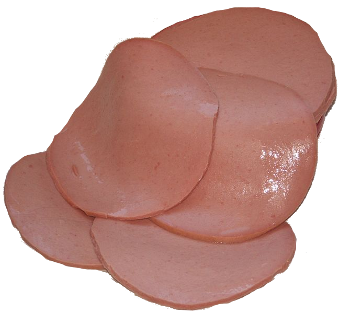The Five-Second Rule
September 29, 2016
Chemistry has given us many useful
materials, but
laboratory chemicals need to be handled carefully because of their
toxicity and other
hazards. The
US Occupational Safety and Health Administration has published a useful introduction to
safe laboratory practice.[1] Such a guide, supplemented by
additional safety information for the specific chemicals being used, should be required reading before working in a laboratory.

The Standard System for the Identification of the Hazards of Materials for Emergency Response (NFPA 704) is a summary label of chemical hazards that indicates the relative flammability (red), health (blue), and instability/reactivity (yellow) hazards (ethyl alcohol shown).
(Modified Wikimedia Commons image.)
Acids are a common laboratory chemical. When working with acids, it's important to use the proper
personal protective equipment (PPE) that includes
goggles,
gloves, a
lab coat, and possibly a protective
apron. Most acids need to be
diluted before use, and the rule is to always add the acid to the diluting
water. Otherwise, the
heat evolved during the dilution would cause added water to
vaporize and sputter into your face.
The reason for this is the large
enthalpy of mixing, also called the heat of mixing, of the acid and water. This is a
thermodynamic effect related to
entropy, and the
Flory–Huggins solution theory is often used to
estimate the heat of mixing. This theory was originally developed for
polymer mixtures, but it's applicable to many
solutions when appropriate values of
solubility parameters are used.[2]
This acid-water dilution rule guides us in our laboratory life, but there are other rules that guide us in everyday life. One of these, known to
early career scientists, is the
mortgage/
rent rule that states that not more than about 25% of your
monthly income should go to rental or mortgage payments. While some
dissenting opinions have scaled this up to above a third of your income,[3] since we're talking safety, 25% would be more
prudent.
The rule of life that's gotten a lot of attention lately is the so-called "
five-second rule." I hadn't heard of this rule until about five years ago, when it started to appear frequently in many
television sitcoms. The rule is that
food dropped on the
floor is safe to
eat if retrieved within five seconds. Such a rule is easily tested by
experiment.
In 2007, scientists from the
Clemson University Department of Food Science and Human Nutrition tested the five-second rule in a series of experiments focused specifically on the
Salmonella Typhimurium bacterium. They examined the transfer of this bacterium from
wood,
tile, and
carpet to
bologna sausage and
bread.[4]

That's a bunch of baloney!
Bologna, called baloney in the US, is considered to be a lesser quality luncheon meat, as its lower price affirms. The idiom, "a bunch of baloney," derives from this fact.
(Wikimedia Commons image by Geoff Lane.)
The Clemson
research team found that the Salmonella Typhimurium bacterium survived for up to four weeks on dry surfaces in populations significant enough to be transferred to foods. It was further found that such bacteria will transfer almost immediately to the bread and bologna on contact. For bologna, a five-second contact was enough to transfer 99% of bacterial cells on a tile surface. Interestingly, transfer from carpet material was very small, being less than 0.5%, as compared with tile and wood surfaces (5-68%).[4]
In a recent follow-up study, scientists from the
School of Environmental and Biological Sciences of
Rutgers University (New Brunswick, New Jersey), did experiments on bacterial transfer to bread, bread with
butter,
watermelon, and
gummy candy.[5-6] The tested surfaces were
stainless steel, tile, wood, and carpet, and the contact times tested were about 1 second, 5 seconds, 30 seconds and 300 seconds.[5]

The Rutgers University research team tested the five-second rule with gummy candy. Gummy bears were my favorite candy before I realized that all that sugar was bad for me. (Modified Wikimedia Commons image by the Institute for Web Science and Technologies, University of Koblenz-Landau.)
This research was conducted at the Rutgers School of Environmental and Biological Sciences by
professor Donald W. Schaffner and his
graduate student,
Robyn Miranda.[6] They used two different bacterial
growth media,
tryptic soy broth and
peptone buffer, to grow the
nonpathogenic Enterobacter aerogenes, that's similar to
Salmonella.[6] The surfaces were spot
inoculated with a
milliliter of the bacteria-contaminated media, and they were allowed to dry for 5 hours, yielding an approximate
concentration of 10
7 colony-forming units/surface.[5-6]
The foods, with a 16
square centimeter contact area, were dropped from a 12.5 cm height and left on the surfaces for the required time. In these experiments, there were 128
scenarios (4 foods x 4 surfaces x 4 durations x 2 bacterial media), and these were
replicated 20 times each, for a total of 2,560
measurements. The post-transfer contamination was estimated by analysis of bacterial
growth rates on tryptic soy agar.[5-6]
Watermelon had the most contamination, and gummy candy had the least, a consequence of the availability of a transfer
fluid. Says Schaffner
"Transfer of bacteria from surfaces to food appears to be affected most by moisture... Bacteria don’t have legs, they move with the moisture, and the wetter the food, the higher the risk of transfer. Also, longer food contact times usually result in the transfer of more bacteria from each surface to food."[6]
As in the previous Clemson experiments, carpet had a very small transfer rate compared with tile and stainless steel. Wood surfaces gave various rates. "The
topography of the surface and food seem to play an important role in bacterial transfer," says Schaffner.[6] Transfer of bacteria to bread (∼0.02-94%) and bread with butter (∼0.02-82%) were similar, so it doesn't matter whether your
bread falls butter-side down.[5] Up to 97% of bacteria were transferred to watermelon, while gummy candy had a range of ∼0.1-62%.[5]
There's some truth to the five-second rule, since longer contact times result in more bacterial transfer, but the type of surface and the type of the food are generally of greater importance.[5-6] As Schaffner summarizes,
"The five-second rule is a significant oversimplification of what actually happens when bacteria transfer from a surface to food... Bacteria can contaminate instantaneously."[6]
References:
- Laboratory Safety Guidance, Report OSHA 3404-11R, Occupational Safety and Health Administration, U.S. Department of Labor, 2011.
- D.M. Gualtieri, "Flux Growth of (Ca,Ge)-Substituted Rare-Earth Iron Garnets in the Regular Solution Approximation," J. Appl. Phys., vol. 50, no. B3 (March 1, 1979), pp. 2170-2172, http://dx.doi.org/10.1063/1.327041.
- Karen Weise, "Housing's 30-Percent-of-Income Rule Is Nearly Useless," Bloomberg.
- P. Anupriya, I. Han, M. Cox, C. Black, and L. Simmons, "Residence time and food contact time effects on transfer of Salmonella Typhimurium from tile, wood and carpet: testing the five-second rule," Journal of Applied Microbiology, vol. 102, no. 4 (April, 2007), pp. 945-953, DOI: 10.1111/j.1365-2672.2006.03171.x.
- Robyn C. Miranda and Donald W. Schaffner, "Longer Contact Times Increase Cross-Contamination of Enterobacter aerogenes from Surfaces to Food," Appl. Environ. Microbiol., Advanced Online Publication (September 2, 2016), doi:10.1128/AEM.01838-16.
- Rutgers Researchers Debunk 'Five-Second Rule': Eating Food off the Floor Isn't Safe, Rutgers University Press Release, September 8, 2016.
Permanent Link to this article
Linked Keywords: Chemistry; material; laboratory; chemical compound; toxicity; hazard; US Occupational Safety and Health Administration; safety; safe; safety data sheet; NFPA 704; Standard System for the Identification of the Hazards of Materials for Emergency Response; flammability; health; reactivity; instability; ethanol; ethyl alcohol; Wikimedia Commons; acid; personal protective equipment; goggles; gloves; lab coat; apron; diluted; water; heat; vaporization; vaporize; enthalpy of mixing; thermodynamics; thermodynamic; entropy; Flory–Huggins solution theory; approximation; estimate; polymer; solution; Hildebrand solubility parameter; career; scientist; mortgage; rent; month; income; dissenting opinion; prudence; prudent; five-second rule; television program; sitcom; food; floor; eating; eat; experiment; Clemson University; Department of Food Science and Human Nutrition; Salmonella Typhimurium; bacteria; bacterium; wood; tile; carpet<; bologna sausage; bread; bunch of baloney; United States; quality; lunch meat; luncheon meat; price; idiom; Geoff Lane; research; School of Environmental and Biological Sciences; Rutgers University (New Brunswick, New Jersey); butter; watermelon; gummy candy; stainless steel; gummy bear; sugar; University of Koblenz-Landau; professor; Donald W. Schaffner; postgraduate education; graduate student; Robyn Miranda; growth medium; tryptic soy broth; tryptone; peptone buffer; nonpathogenic; Enterobacter aerogenes; Salmonella; inoculation; inoculated; milliliter; concentration; colony-forming unit; square centimeter; scenario; replication; statistics; replicate; measurement; exponential growth rate; fluid; moisture; leg; topography; buttered toast phenomenon; bread falls butter-side down.